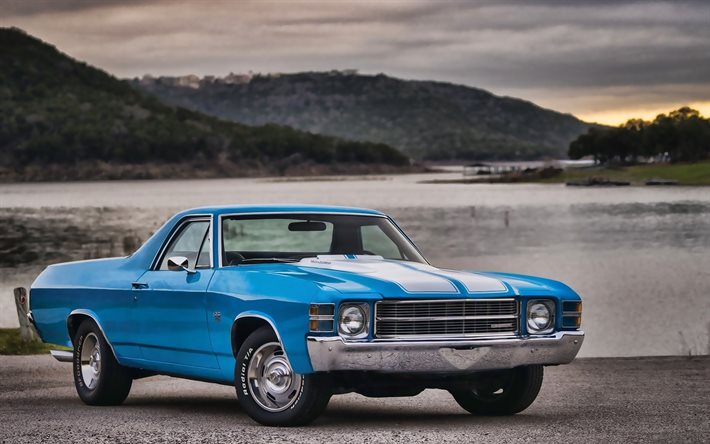
Pontiac vehicles are American automobiles which are owned and maintained by General Motors. They were first manufactured by General Motors' Pontiac Motor Division. General Motors produced and commercialized Pontiac cars from 1919 until 1973. Pontiac cars still enjoy popularity in many parts around the globe. This article will cover Pontiac’s history and the most popular Pontiac models of that era. Continue reading to find out more about Pontiac and the special qualities that make these cars unique.
General Motors
After a long history of selling high-quality cars, Pontiac is being phased out of production. Last year, only one Pontiac rolled off a factory line. The company has entered a new era of speed, performance and sex appeal. As a result, the Pontiac brand will be discontinued by the end of 2010.

Silver Streak
Silver Streak Pontiacs, from 1935 to 1956 were easily identifiable due to their parallel ridges across the trunk & hood. These ridges reminded me of old-fashioned suspenders. The styling was also unique to Pontiac, but the car was not without flaws. Here is a short history of Silver Streak. Pontiac began making more modern vehicles following the war.
G-body models
The Pontiac G body models were a classic and boxy design in an era when boxy was fashionable. The most practical versions of the G-body even earned a wagon cult. G-body models also make it easy to modify. There is also a great aftermarket support. Here are some ways you can improve your G body. These are some tips that will improve the performance of your Pontiac.
Redesign in 1973
The Redesign of Pontiac cars in 1972 resulted in a massive increase in production of full-size vehicles. The Pontiac Catalina produced nearly the same amount as the 1971 Pontiac full-size models. Also, Bonneville and Grand Ville saw significant gains. The full-size Pontiac lineup underwent significant redesigns in 1973. The car's new look featured a substantial energy-absorbing bumper, and a full width grille with horizontal bars.
In 1980s, body styling changed
As the market for midsize vehicles matured, the focus for Pontiac shifted from assurance of roadability to luxury and convenience. The Grand Am was a part of a revamped lineup with "Colonnade" styling. The Grand Am was billed as combining Trans Am performance with Grand Prix luxury. Bill Collins, an assistant chief engineer on the original GTO, was involved in the design of the Grand Am. John Seaton, a chassis wizard, also contributed to the design. Both worked on the concept, with Collins aiming to approximate European sedans.

Last model sold in 2010,
The Pontiac name is closing after more than 80 year. In the last few years, Pontiac became unprofitable. It sold rebadged Chevrolets for a fraction of its original price. It was necessary to maintain competitiveness with Chevrolet. However, the quality of these cars fell below its competitors. Pontiac was eventually canceled. Pontiac Vibe, the last Pontiac model that was sold in America in 2010, was the Pontiac Vibe.
FAQ
What length of an automotive course is it?
An automotive course is three years long.
The first year focuses on theory and learning about cars. The second year is dedicated to practical training, where you will learn how to fix cars, drive them, and do other jobs around the car. The final year is spent doing a placement at a local garage, which gives you experience in fixing real-world problems.
Is it hard to be a mechanic apprentice?
It's not easy, however, it is very rewarding and offers many opportunities for growth.
You need to have patience and perseverance. You should also be able to repair cars, trucks, and motorbikes.
Customers and loved ones can place a lot of pressure on you. But you should never feel pressured into making decisions you aren't comfortable with.
If you enjoy fixing cars, it could be a great career choice. This is a job that allows you to earn a decent income and grow your business.
But, you might prefer a different path. This is where you might be interested in becoming a technician.
This requires you to use your technical expertise in support of other workers. This could be a way to help technicians with their problems or to teach them new techniques.
Another option is becoming a service advisor. When customers bring their cars into a garage, they will receive advice and assistance.
It all depends on your goals. There are plenty of options available, and you can choose which suits you best.
What qualifications do you need to be a mechanic?
To become a mechanic, you'll need to pass a series of exams. These exams include:
-
A test of general knowledge
-
A practical exam
-
An apprenticeship test
These tests are intended to make sure you have a solid understanding of the basics of mechanics before you can start your career as a mechanic.
You'll be eligible for work as a mechanic after you have passed the tests. You'll still need an apprenticeship. This will involve trade training.
To learn all you can about vehicle repair, you will need to take classes and workshops. You'll also have to work alongside experienced mechanics.
For mechanic success, you'll need to be focused and meticulous. It is essential to pay attention to all aspects of vehicle repairs.
To be a successful mechanic, you will need patience and perseverance. If you don’t enjoy following instructions, this might not be the right career path.
However, if you love cars or enjoy working on them, you might be happy in this field.
Statistics
- Apprentice mechanics earn significantly less hourly than mechanics who have completed training, with a median wage of approximately $14.50 an hour, according to PayScale. (jobhero.com)
- The U.S. Bureau of Labor Statistics (BLS) reports that the job outlook for automotive service technicians and mechanics is expected to decline by 4% from 2019 to 2029. (indeed.com)
- 52% of Mechanics in the United States think their salaries are enough for the cost of living in their area. (indeed.com)
External Links
How To
How to become an Automotive Technician
Automotive technicians provide repair and maintenance services to vehicles. He/she is employed at automobile dealerships, garages, service centres, and auto shops. He/she repairs cars, trucks, motorbikes and snowmobiles for customers. An automotive technician must know how to diagnose problems and perform repairs efficiently, safely, accurately, quickly, and correctly.
An associate degree should be obtained from a vocational school if you wish to work as an auto technician. After completing this program, he/she will need to pass the National Institute for Automotive Service Excellence's (ASE) certification exam. ASE stands for American Society of Mechanical Engineers. Two sections make up the ASE certification examination. One section tests knowledge of mechanical components, while the other section tests skills in practical areas. To pass the test, you will need to visit an authorized testing location. These testing sites can be found online and through your local dealer.
After passing the test, a candidate must pass a state examination before becoming licensed as an automotive technician. The process will vary depending on where an applicant lives. Some states require that candidates attend training courses, while others permit them to learn independently. Some states require technicians to be licensed immediately upon receiving their license. Other states wait until they have been employed as automotive technicians for at least six month.
A person must apply to an auto dealership in order to get started as an automobile technician. Most new employees begin as apprentices once they are hired. Apprenticeships last for three years. A student will learn to repair basic things like changing oil, adjusting brakes or replacing tires. They also learn how spark plugs are cleaned and inspect engine compartments. Some students learn how to do advanced repairs, such as installing air filters, replacing shocks, repairing engines, and replacing transmission fluids. Most schools offer classes during regular business hours. However, some schools offer evening classes if needed.
After completing an apprenticeship, a student becomes a journeyman. Journeymen generally spend four- to five decades learning how to fix major systems like transmissions. You will also learn how to repair complicated electrical components, as well as how to remanufacture engines and rebuild transmissions. Many employers prefer hiring journeymen because they know the job well and understand what the customer expects.
After passing the exams, candidates may be eligible to open their own shop if they pass all requirements. According to the Bureau of Labor Statistics, nearly 1.7 million automotive mechanic jobs were available in 2010. This figure is expected to rise 18 percent between 2009-2020. The candidate should expect to invest thousands of money in equipment and supplies if he/she decides to start his/her shop.
Automotive technicians' salaries depend on many factors such as the employer, whereabouts, education level and experience. On average, a jobless person could expect to earn $20,000 annually. Someone who has only a highschool diploma could earn around 21,000 dollars per year. Associate's degrees earn approximately $24,000 per annum. Technicians with bachelor's degrees earned about $27,000 per year. A master's degree earns around $32,000 per a year. A common trend is for salary increases to occur so a professional making less than $30,000 can reasonably expect to be earning $40,000 or more within a few years.